I live in a place called Mountcharles, it’s convenient to Donegal town. We got the name of the wee village from Charles II. Our landlord was friendly with him, so we’re called Mountcharles.
I spent most of my life in construction, but part time farming. I’m 73 now. We’ve sheep and cattle, about 100 ewes and just a few sucklers.
We’re very lucky that our son is very interested in the farm, so he does the work now. I just supervise.
When I was growing up the most of our parish was inhabited with people living in stone houses roofed with thatch.
My father was what you would have called a handyman, he would have worked at most things. He participated in rebuilding the walls of these houses, because sometimes they would collapse with the weight of the heavy thatch. There was a lot of maintaining in those wee houses.
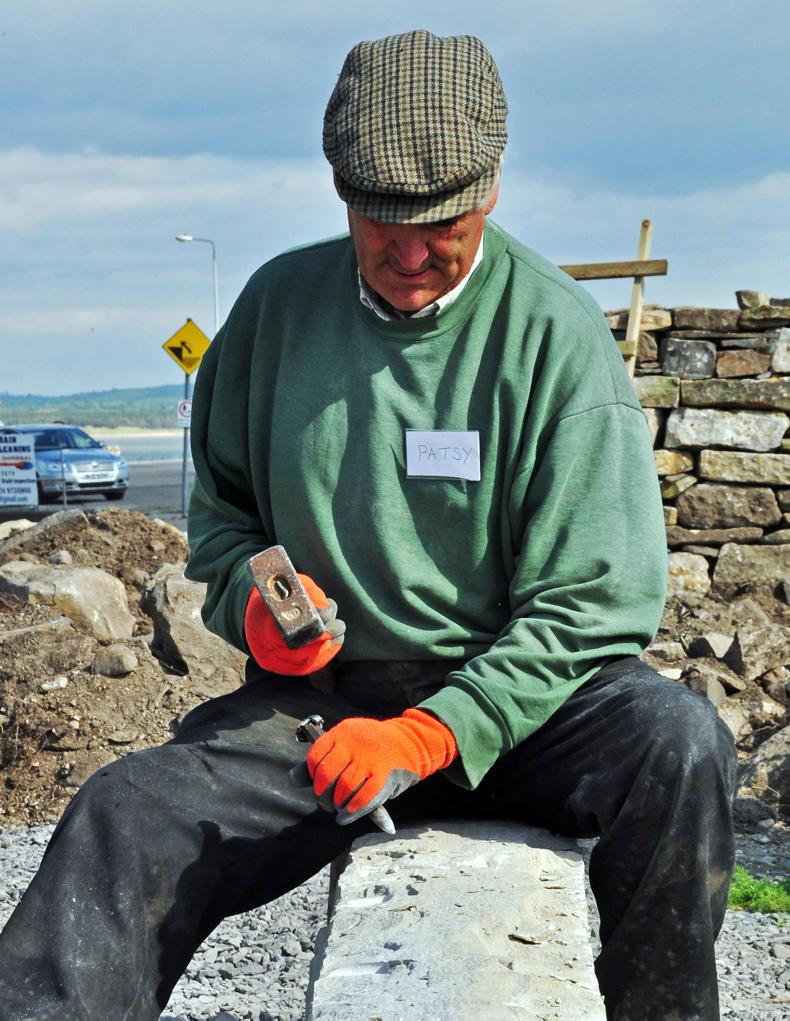
Patsy McInaw from Mountcharles, Co Donegal. \ Sunny Wieler/DSWAI
There were times I went with him when I should have been going to school. I became very interested in stone, so it developed from that.
Dry stone walls as a boundary, they aren’t a big tradition in our area. Most of the stone walls, if you look, they were created on good limestone land that was reclaimed for cultivation.
A lot of the boundaries in our part of the country would have been mounds of earth. Up around Ballintra, Ballyshannon, there’s a lot of stone walls.
I spent nearly 55 years working in construction with local contractors, some time in England as well. The stone-walled houses, they disappeared when I was in my early teens. It was bricks and mortar then.
Reclaiming
My grandfather bought this place way back in 1912. He came home from America that time and he actually built a stone house and put slate on the roof. We were one of the few slate houses in the parish at one time. We were up market, like gentry we were.
When I was growing up, it was mainly arable, you know. We just produced oats, spuds, turnips and kale. We only cultivated three or four acres. That’s all we needed. Livestock would have consisted of maybe one or two milk cows and their progeny.
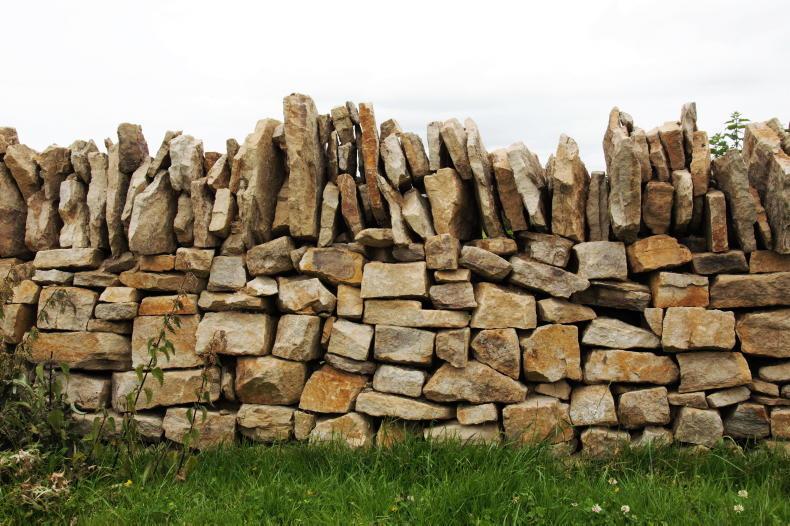
Some of the walls on Patsy McInaw's farm. \ Sunny Wieler/DSWAI
The farm, primarily it was boggy land. There would have been blanket peat in our county. There probably would have been a couple of metres at one time and it was cut away during the previous century. It was down then to the harder ground when we came about.
Nobody had any inclination to head into the heathery land to reclaim it, but it was some kind of notion I took way back that I would do this
When we started reclaiming the land most of the older people said it was a silly thing to do, people weren’t doing that and they didn’t need any more land. A few acres farmed arable was enough for self-sufficiency.
Nobody had any inclination to head into the heathery land to reclaim it, but it was some kind of notion I took way back that I would do this.
I persevered with it over the years and eventually it turned from moorland into grassland. That’s how our wee land came about. Eventually we ended up with 50ac of reasonably good grassland.
Stone walling
We had divided the land up with wire fences. But then about 30 years ago the notion came into our heads that we’d replace the wire fence with dry stone walls. We’ve created a pattern of fields now divided by stone walls.
It just came about, it wasn’t really planned. I did all the building myself. My two sons, they dug up the stone for me. We got the stone out of our own land. There’s stone underneath our wee bit of soil, a layer of very good-quality sandstone.
You should be able to lift the right stone each time. You shouldn’t have to lift a stone twice
A figure a neighbour pointed out to me was that we did about 12,000 manual hours building stone on our farm. We’ve about 2.5km of dry stone walls. The wife says I’m stone mad.
Building a stone wall, it’s a wee bit like playing chess. You seem to develop a sense of how they fit together.
You should be able to lift the right stone each time. You shouldn’t have to lift a stone twice, you know. If you see someone lifting a stone and throwing it away, they’re not really that confident in what they’re doing. It will all evolve in your mind over time as to the way they fit together.

Patsy McInaw from Mountcharles, Co Donegal. \ Sunny Wieler/DSWAI
There’s a distinction in stone walls in different parts of the country. On Inis Óirr they build a lot of their stone on the edge. They don’t build them flat like us. We build them in layers, but a lot of the stone walls on Inis Óirr, you’ll see they stand the stones vertically, facing one another and then jam ones in between.
Preserving the craft
It’s a very absorbing craft, really. I really enjoy it. Younger people learning to appreciate it and enjoying it too, that would be my ambition.
I got involved in the Dry Stone Wall Association of Ireland (DSWAI) a while back. One of the members was passing by one day and he noticed our walls. He called in to enquire and he invited me out to Inis Óirr to Féile na gCloch (the festival of stone).
The DSWAI is run by volunteers and aims to create awareness of the need for preserving the craft of dry stone building in Ireland.
Of my children, the two boys live here. The three girls live on small farms in different parts. We’re all a wee bit connected to the land, really
It’s great to be associated with these younger people, much younger than myself, and we’ve something in common. It’s been a revelation for me personally to meet up with that group of people.
Of my children, the two boys live here. The three girls live on small farms in different parts. We’re all a wee bit connected to the land, really.
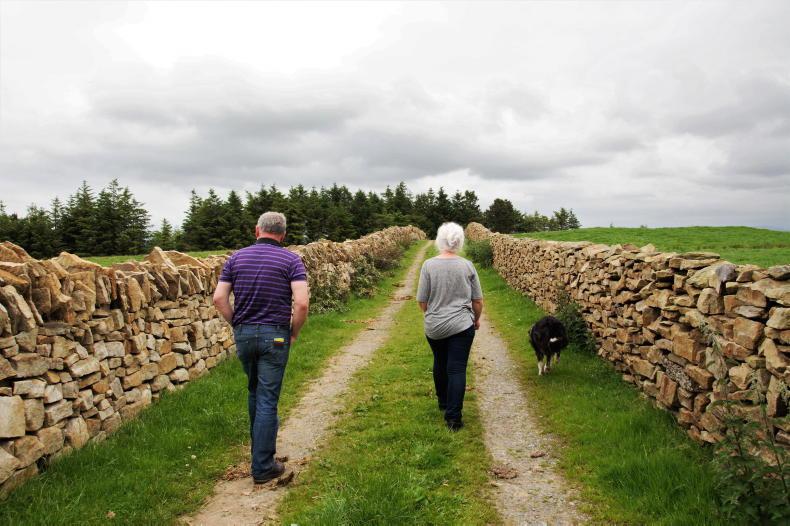
Some of the walls on Patsy McInaw's farm. \ Sunny Wieler/DSWAI
It’s estimated, the Irish countryside is home to over 400,000km of dry stone walls, and 210,000km of stone-earthen banks (Mueller George, Field Boundaries of Europe, 2012).
Ireland has over 60% more stone-earthen banks and 25% more dry stone walls than the next nearest countries in Europe (the UK has 85,340km of stone-earthen banks and Croatia has 300,000km of dry stone walls).
Read more
Podcast: ‘I was out beating the ball against the wall for hours on end’
‘In Dublin we’re seen as farmers, but in Wicklow we’re seen as Dubs’
I live in a place called Mountcharles, it’s convenient to Donegal town. We got the name of the wee village from Charles II. Our landlord was friendly with him, so we’re called Mountcharles.
I spent most of my life in construction, but part time farming. I’m 73 now. We’ve sheep and cattle, about 100 ewes and just a few sucklers.
We’re very lucky that our son is very interested in the farm, so he does the work now. I just supervise.
When I was growing up the most of our parish was inhabited with people living in stone houses roofed with thatch.
My father was what you would have called a handyman, he would have worked at most things. He participated in rebuilding the walls of these houses, because sometimes they would collapse with the weight of the heavy thatch. There was a lot of maintaining in those wee houses.

Patsy McInaw from Mountcharles, Co Donegal. \ Sunny Wieler/DSWAI
There were times I went with him when I should have been going to school. I became very interested in stone, so it developed from that.
Dry stone walls as a boundary, they aren’t a big tradition in our area. Most of the stone walls, if you look, they were created on good limestone land that was reclaimed for cultivation.
A lot of the boundaries in our part of the country would have been mounds of earth. Up around Ballintra, Ballyshannon, there’s a lot of stone walls.
I spent nearly 55 years working in construction with local contractors, some time in England as well. The stone-walled houses, they disappeared when I was in my early teens. It was bricks and mortar then.
Reclaiming
My grandfather bought this place way back in 1912. He came home from America that time and he actually built a stone house and put slate on the roof. We were one of the few slate houses in the parish at one time. We were up market, like gentry we were.
When I was growing up, it was mainly arable, you know. We just produced oats, spuds, turnips and kale. We only cultivated three or four acres. That’s all we needed. Livestock would have consisted of maybe one or two milk cows and their progeny.

Some of the walls on Patsy McInaw's farm. \ Sunny Wieler/DSWAI
The farm, primarily it was boggy land. There would have been blanket peat in our county. There probably would have been a couple of metres at one time and it was cut away during the previous century. It was down then to the harder ground when we came about.
Nobody had any inclination to head into the heathery land to reclaim it, but it was some kind of notion I took way back that I would do this
When we started reclaiming the land most of the older people said it was a silly thing to do, people weren’t doing that and they didn’t need any more land. A few acres farmed arable was enough for self-sufficiency.
Nobody had any inclination to head into the heathery land to reclaim it, but it was some kind of notion I took way back that I would do this.
I persevered with it over the years and eventually it turned from moorland into grassland. That’s how our wee land came about. Eventually we ended up with 50ac of reasonably good grassland.
Stone walling
We had divided the land up with wire fences. But then about 30 years ago the notion came into our heads that we’d replace the wire fence with dry stone walls. We’ve created a pattern of fields now divided by stone walls.
It just came about, it wasn’t really planned. I did all the building myself. My two sons, they dug up the stone for me. We got the stone out of our own land. There’s stone underneath our wee bit of soil, a layer of very good-quality sandstone.
You should be able to lift the right stone each time. You shouldn’t have to lift a stone twice
A figure a neighbour pointed out to me was that we did about 12,000 manual hours building stone on our farm. We’ve about 2.5km of dry stone walls. The wife says I’m stone mad.
Building a stone wall, it’s a wee bit like playing chess. You seem to develop a sense of how they fit together.
You should be able to lift the right stone each time. You shouldn’t have to lift a stone twice, you know. If you see someone lifting a stone and throwing it away, they’re not really that confident in what they’re doing. It will all evolve in your mind over time as to the way they fit together.

Patsy McInaw from Mountcharles, Co Donegal. \ Sunny Wieler/DSWAI
There’s a distinction in stone walls in different parts of the country. On Inis Óirr they build a lot of their stone on the edge. They don’t build them flat like us. We build them in layers, but a lot of the stone walls on Inis Óirr, you’ll see they stand the stones vertically, facing one another and then jam ones in between.
Preserving the craft
It’s a very absorbing craft, really. I really enjoy it. Younger people learning to appreciate it and enjoying it too, that would be my ambition.
I got involved in the Dry Stone Wall Association of Ireland (DSWAI) a while back. One of the members was passing by one day and he noticed our walls. He called in to enquire and he invited me out to Inis Óirr to Féile na gCloch (the festival of stone).
The DSWAI is run by volunteers and aims to create awareness of the need for preserving the craft of dry stone building in Ireland.
Of my children, the two boys live here. The three girls live on small farms in different parts. We’re all a wee bit connected to the land, really
It’s great to be associated with these younger people, much younger than myself, and we’ve something in common. It’s been a revelation for me personally to meet up with that group of people.
Of my children, the two boys live here. The three girls live on small farms in different parts. We’re all a wee bit connected to the land, really.

Some of the walls on Patsy McInaw's farm. \ Sunny Wieler/DSWAI
It’s estimated, the Irish countryside is home to over 400,000km of dry stone walls, and 210,000km of stone-earthen banks (Mueller George, Field Boundaries of Europe, 2012).
Ireland has over 60% more stone-earthen banks and 25% more dry stone walls than the next nearest countries in Europe (the UK has 85,340km of stone-earthen banks and Croatia has 300,000km of dry stone walls).
Read more
Podcast: ‘I was out beating the ball against the wall for hours on end’
‘In Dublin we’re seen as farmers, but in Wicklow we’re seen as Dubs’








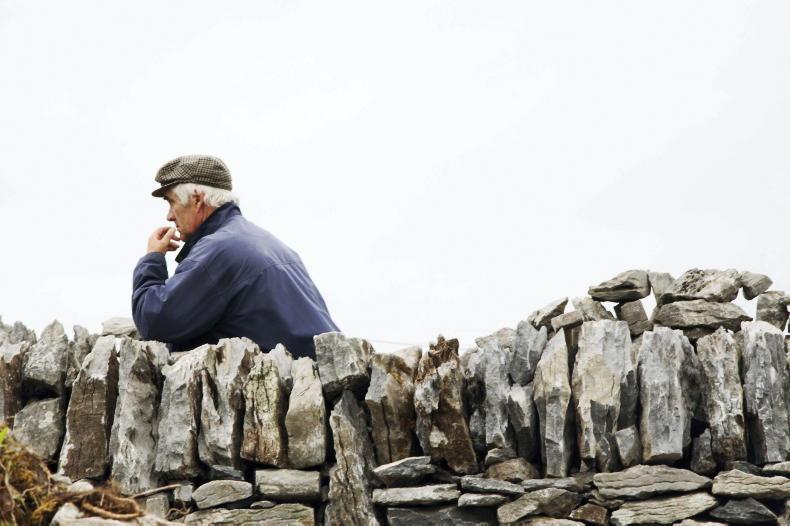
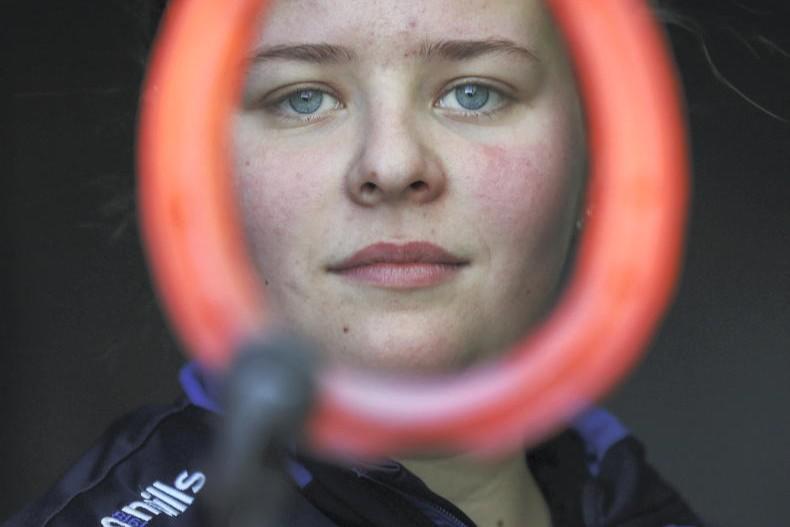

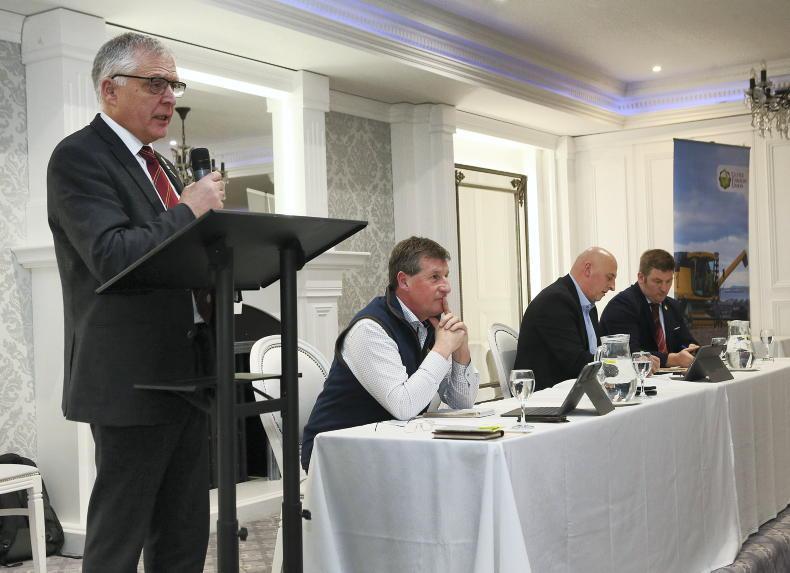
SHARING OPTIONS